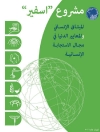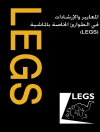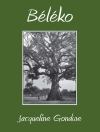This edited collection offers an interdisciplinary study of Twin Peaks: The Return, the third season of a TV program that has attracted the attention (and appreciation) of spectators, fans, and critics for over two decades. The book takes readers into several distinct areas and addresses the different approaches and the range of topics invited by the multidimensionality of the subject itself: the philosophical, the artistic, the socio-cultural, and the personal. The eighteen chapters constituting the volume are academic in their approach to the subject and in their methodology, whether they apply a historical, psychoanalytical, film studies, or gender studies perspective to the text under examination.
The variety and range of perspectives in these aforementioned chapters reflect the belief that a study of the full complexity of Twin Peaks: The Return, as well as a timely assessment of the critical importance of the program, requires both an interdisciplinary perspective and the fusion of different intellectual approaches across genres. The chapters demonstrate a collective awareness of the TV series as a fundamental milestone in contemporary culture.
Daftar Isi
Part I. In the Real World: History, Technology and Fandom.- 1. Entering the World of Twin Peaks (Antonio Sanna).- 2. Is It Happening Again? Twin Peaks and ‘The Return’ of History (Matthew Ellis and Tyler Theus).- 3. Extraterrestrial Intelligences in the Atomic Age: Exploring the Rhetorical Function of Aliens and the ‘Alien’ in the Twin PeaksUniverse (Elizabeth Lowry).- 4. Lucy Finally Understands How Cellphones Work: Ambiguous Digital Technologies in Twin Peaks: The Return and its Fan Communities (Jeffrey Fallis and T. Kyle King).- 5. ‘The owls are not what they meme’: Making Sense of Twin Peaks with Internet Memes (Brigid Cherry).- 6. ‘Is it about the bunny? No, it’s not about the bunny!’: David Lynch’s Fandom and Trolling of Peak TV Audiences (David Mc Avoy).- Part II. In the Lodges: Subjectivity and (Un)Realism.- 7. ‘Between Two Mysteries’: Intermediacy in Twin Peaks: The Return (Thomas Britt).- 8. ‘My Log has a Message For You, ’ or, Vibrant Matter and Twin Peaks: On Thing-Power and Subjectivity (Anthony Ballas).- 9. ‘Here’s to the pie that saved your life, Dougie:’ The Weird Realism of Twin Peaks (Ryan Coogan).- 10. Movement in the Box: The Production of Surreal Social Space and the Alienated Body (Joel Hawkes).- 11. How Mark Frost’s Twin Peaks Books Clarify and Confound the Nature of Reality (Donald Mc Carthy).- 12. Copy of a Copy of a Copy: Theorizing the Triplicity of Self and Otherness in Season Three of Twin Peaks (Kwasu David Tembo).- Part III. Inside the Psyche: Trauma, Dreams and Music.- 13. From Lost Highway to Twin Peaks: Representations of Trauma and Transformation in Lynch’s Late Works (Timothy William Galow).- 14. Kafka’s Crime Film: Twin Peaks: The Return and the Brotherhood of Lynch and Kafka (Adam Daniel).- 15. Who is the Dreamer? (Michael Potter and Cam Cobb).- 16. Is it the Wind in the Tall Trees or Just the Distant Buzz of Electricity?: Sound and Music as Portent in Twin Peaks’ Season Three (Andrew T. Burt).- 17. ‘Listen to the Sounds’: Sound and Storytelling in Twin Peaks: The Return (Kingsley Marshall and Rupert Loydell).- 18. ‘I’ll point you to a better time/A safer place to be’: Music, Nostalgia and Estrangement in Twin Peaks: The Return (David Sweeney).
Tentang Penulis
Antonio Sanna completed his Ph D at the University of Westminster, UK. He has published over sixty essays and reviews in international journals and in a variety of edited collections. He is co-editor (with Adam Barkman) of A Critical Companion to Tim Burton (2017) and A Critical Companion to James Cameron (2018), and editor of Pirates in History and Popular Culture (2018).












